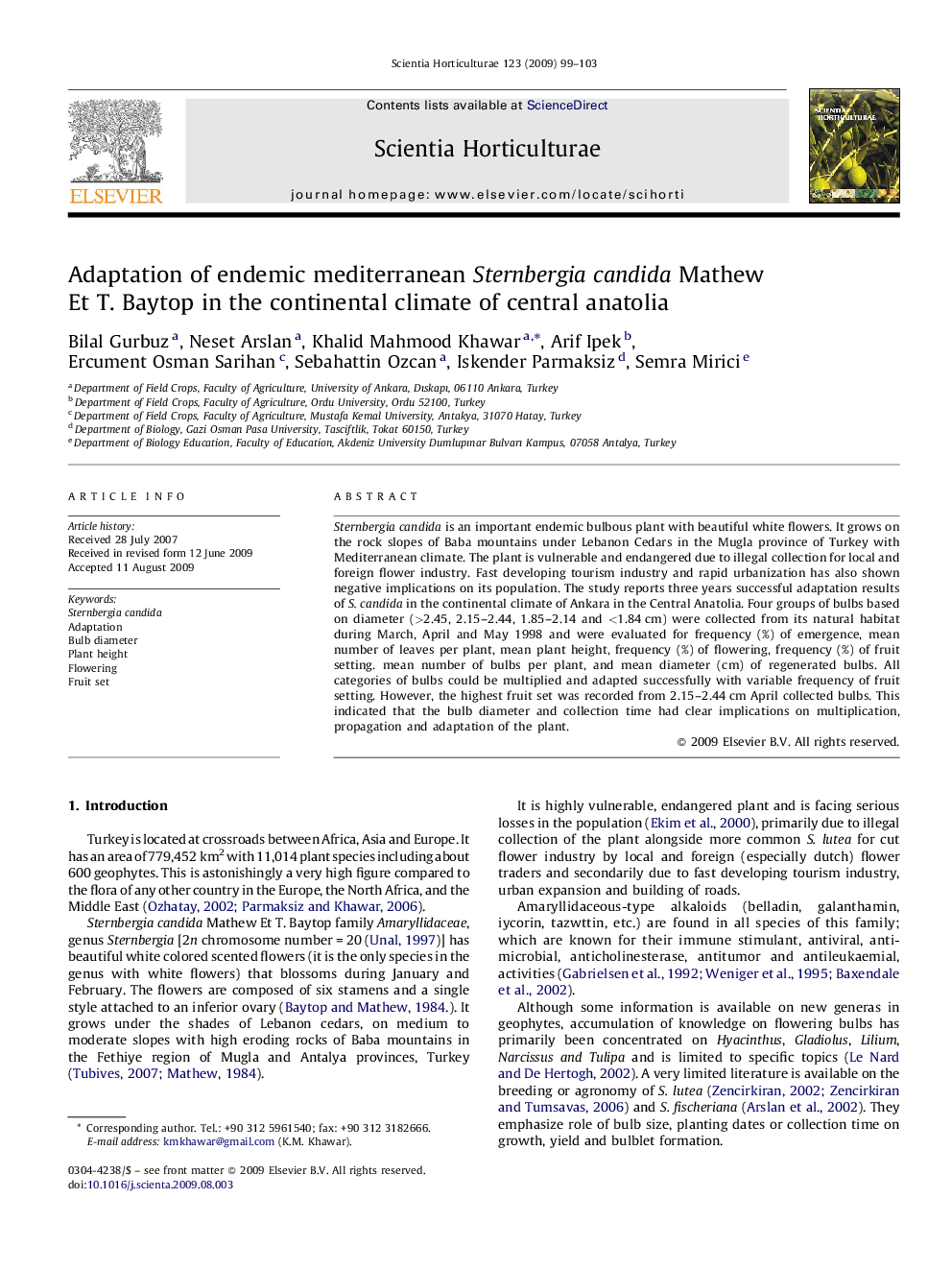| Article ID | Journal | Published Year | Pages | File Type |
|---|---|---|---|---|
| 4569002 | Scientia Horticulturae | 2009 | 5 Pages |
Abstract
Sternbergia candida is an important endemic bulbous plant with beautiful white flowers. It grows on the rock slopes of Baba mountains under Lebanon Cedars in the Mugla province of Turkey with Mediterranean climate. The plant is vulnerable and endangered due to illegal collection for local and foreign flower industry. Fast developing tourism industry and rapid urbanization has also shown negative implications on its population. The study reports three years successful adaptation results of S. candida in the continental climate of Ankara in the Central Anatolia. Four groups of bulbs based on diameter (>2.45, 2.15-2.44, 1.85-2.14 and <1.84Â cm) were collected from its natural habitat during March, April and May 1998 and were evaluated for frequency (%) of emergence, mean number of leaves per plant, mean plant height, frequency (%) of flowering, frequency (%) of fruit setting. mean number of bulbs per plant, and mean diameter (cm) of regenerated bulbs. All categories of bulbs could be multiplied and adapted successfully with variable frequency of fruit setting. However, the highest fruit set was recorded from 2.15-2.44Â cm April collected bulbs. This indicated that the bulb diameter and collection time had clear implications on multiplication, propagation and adaptation of the plant.
Related Topics
Life Sciences
Agricultural and Biological Sciences
Horticulture
Authors
Bilal Gurbuz, Neset Arslan, Khalid Mahmood Khawar, Arif Ipek, Ercument Osman Sarihan, Sebahattin Ozcan, Iskender Parmaksiz, Semra Mirici,
